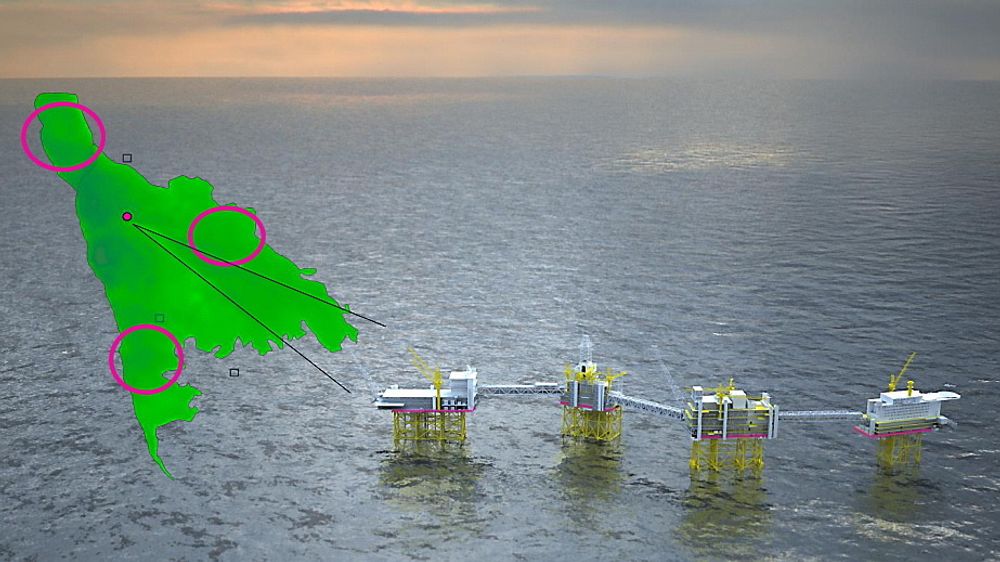Statoil and partners are now planning the four stages of expanding the enormous Johan Sverdrup oilfield. Altogether, seven platforms could be standing in the field by 2025, if all the stages are realized.
The maximum production of the field will represent 25 percent of Norwegian oil platform production.
At a recent hearing, Statoil issued program proposals for the impact assessment of the building of the Johan Sverdrup oilfield.
This part of the process will result in a plan for the development and operation (PUD) of the first part of the Johan Sverdrup oilfield. Statoil will present this plan to the government in the first quarter of 2015.
The document will present possible scenarios for the expansion of the whole field, and the stages will be quantified. Statoil emphasizes that no final decisions are made concerning partnership and that there is still uncertainty connected to the timing and extent of the development.
Extensive first stage
On February 13, Statoil and partners presented the concept selection concerning the first stage of Johan Sverdrup development. This will be the most extensive stage as it involves the establishment of a field center that will receive oil from the future stages.
The Johan Sverdrup field center is established to process and operate the future stages of the field, and that is why this first stage is extensive, wrote Ørjan Heradstveit, a press contact at Statoil.
Heradstveit explained that during the next stages, the processing capacity of the field center will be expanded, and the parts of the field that we can’t reach from the field center will be built. The riser platform of stage one is designed to fit future modules that can receive enhanced production from future development stages.
In the document, the stages are described as the following:
Stage Two
An additional processing platform will connect to the riser platform built in the field center of stage one. A free standing wellhead platform east of the field will also connect to the field center through pipelines and cables.


Wellstreams will be sent to the field center, while power, injection water, and gas for gas lift is provided by the field center.
Startup is estimated no sooner than three or four years after stage one. This means between the years 2022 and 2023.
Stage Three
In the third stage, underwater production frames might be installed to connect the field center with multistage flowlines.
Underwater injection frames might also be needed at this stage to connect to the southernmost water injection frame built in stage one.
Startup is estimated no sooner than five years after stage one, or between the years 2023 and 2024.
Stage Four
At this stage, another freestanding wellhead platform might be placed in the Johan Sverdrup field.
Most likely this will be placed in the north of the field and will be identical with the wellhead platform of stage two.
Unprocessed wellstreams will be sent to the field center while power, injection water, and gas for gas lift will be received from the field center.
Startup is estimated no sooner than four to six years after stage one, or between the years 2023 and 2025.
Uncertainty
As previously mentioned, there is a lot of uncertainty relating to the last three stages. The installations of the future stages will be freestanding wellhead platforms and/or underwater production frames that can be connected to the field center, according to Heradstveit.
The partners of the Sverdrup license will consider underwater solutions with multistage wellstream back to the field center. They will also consider independent wellhead platforms with and without processing, with partial processing, or with full processing and reinjection of produced water, according to the proposals that were issued in the hearing.
According to Heradstveit, timing, type of installation, and order of stages are not final and might change.
The Johan Sverdrup field contains between 1.8 and 2.9 billion barrels of oil. More than 70 percent of the total resources of the field can be extracted through the installations of stage one, according to Det Norske, a partner of the Sverdrup license.


